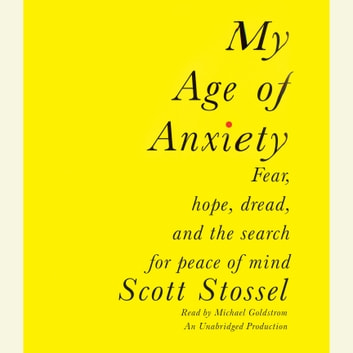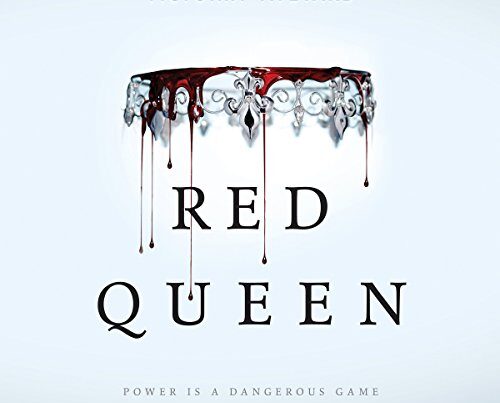Scott Stossel’s “My Age of Anxiety” audiobook delves into the history and personal impact of anxiety disorders. It combines memoir, science, and history to offer a comprehensive view.
Anxiety disorders affect millions worldwide. Scott Stossel’s audiobook, “My Age of Anxiety,” explores this pervasive issue through a blend of personal narrative and scientific insight. Stossel, a long-time sufferer of anxiety, provides an intimate look into his struggles and the broader context of anxiety disorders.
He examines the history, treatments, and societal perceptions of anxiety, making the audiobook both informative and relatable. This compelling mix of memoir and research helps listeners understand the complexities of anxiety, offering hope and understanding to those who suffer from it.

Introduction To ‘my Age Of Anxiety’
Scott Stossel shares his story about living with anxiety. He talks about his struggles and how he tries to manage them. The journey is both touching and insightful. Readers can relate to his experiences and find comfort in his words.
The audiobook version of ‘My Age of Anxiety’ is narrated by Scott Stossel himself. His voice adds a personal touch to the story. The audiobook is easy to follow and understand. Listeners can learn a lot about anxiety through his detailed explanations. It’s a great resource for anyone looking to understand mental health better.

Historical Context Of Anxiety
Scott Stossel’s audiobook, “My Age of Anxiety,” delves into the historical roots of anxiety disorders. Stossel explores how cultural, medical, and personal narratives shape our understanding of anxiety.
Anxiety Through The Ages
Humans have felt anxiety for centuries. Ancient texts mention anxious feelings. Early civilizations had different views on anxiety. Some saw it as a curse or a gift. Many believed in supernatural causes.
In the Middle Ages, anxiety was often linked to religion. People thought it was a sign of sin. During the Renaissance, thinkers began to explore the mind. This led to new ideas about anxiety.
Evolution Of Mental Health Understanding
Modern science has changed our understanding of anxiety. In the 19th century, doctors started to see anxiety as a medical issue. This was a big shift from older beliefs.
In the 20th century, new treatments were developed. These included therapy and medication. Today, we know that anxiety is common and treatable. Research continues to find better ways to help people.
Anxiety Defined
Anxiety can cause a fast heart rate and sweating. People might feel dizzy or lightheaded. Some experience trembling or shaking. Difficulty concentrating is a common symptom. Sleep problems can also be a sign. Certain situations can trigger anxiety. Crowded places might make someone feel anxious. Speaking in public is another common trigger. Loud noises can also cause anxiety.
Anxiety is different from depression. Depression often includes feelings of deep sadness. Anxiety is more about worry and fear. Obsessive-Compulsive Disorder (OCD) involves repeated actions. People with anxiety might not have these compulsions. Panic attacks are sudden and intense. Anxiety can be ongoing and less intense. Post-Traumatic Stress Disorder (PTSD) comes after trauma. Anxiety doesn’t always follow a specific event.
Scott Stossel’s Battle With Anxiety
Scott Stossel noticed anxiety early in life. He felt nervous in school and social events. Simple tasks made him anxious. He often felt overwhelmed by daily activities. He tried to hide his feelings. But the anxiety was always there.
Anxiety affected Scott’s personal life. Relationships were hard to maintain. He struggled to connect with friends and family. In his professional life, anxiety made work challenging. Deadlines and meetings caused him stress. He found it hard to focus on tasks. Despite the struggles, Scott continued to work and live his life.
Treatment And Management Of Anxiety
Traditional therapies include cognitive-behavioral therapy (CBT) and talk therapy. These methods help people understand their anxiety. They also teach coping strategies. Relaxation techniques like deep breathing and meditation are also common. These methods have been used for many years.
Modern approaches include medications such as SSRIs and benzodiazepines. These drugs help balance chemicals in the brain. There are also new therapies like mindfulness-based stress reduction. Virtual reality therapy is another new method. It uses technology to expose people to their fears in a safe way.

Societal Perceptions Of Anxiety
Many people have misunderstandings about anxiety. They think it shows weakness. Some believe it’s just worrying too much. These thoughts hurt those with anxiety. People with anxiety often feel ashamed. They may hide their feelings. This can worsen their condition. Education is key. Learning the truth about anxiety helps everyone.
Attitudes towards mental health are improving. More people now understand mental illnesses. They know that anxiety is a real condition. Support groups are more common. People are more open about their feelings. This helps in reducing the stigma. Celebrities talk about their struggles. This encourages others to seek help. Awareness campaigns also play a big role. They educate the public and promote understanding.
Personal Anecdotes From ‘my Age Of Anxiety’
Scott Stossel shares his deep fears and struggles with anxiety. He talks about panic attacks that struck him at the worst times. One key moment is when he realized anxiety’s roots in his childhood. This made him see the long-term impact on his life.
Stossel’s breakthrough came with understanding therapy and medication. He discovered the importance of facing his fears. This helped him manage his anxiety better. Another turning point was accepting his condition. He learned that anxiety does not define him. These realizations helped him find peace.
Reflections And Takeaways
Anxiety can affect anyone. Stossel shares his own struggles. His story makes it clear that no one is alone. Many people live with anxiety every day. Understanding and accepting this can help. Support from friends and family is crucial. Simple steps can reduce anxiety. Breathing exercises and mindfulness can help.
Stossel shows that people with anxiety can still achieve great things. His story gives hope to others. Courage and resilience are key. Never give up on yourself. Seeking help is a sign of strength. Professional help can make a big difference. Therapy and medication can improve lives. Stossel’s journey inspires many to keep going.
Conclusion
“My Age of Anxiety” by Scott Stossel offers deep insights into living with anxiety. The audiobook narrates personal struggles and scientific perspectives. It’s a must-listen for anyone seeking understanding and empathy. Dive into this compelling journey to gain a better grasp of anxiety’s impact and management strategies.



